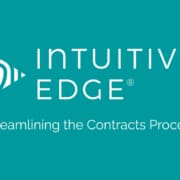Maximizing Contract Value in the Fast Lane: The Crucial Role of Management During M&A
 In the world of business, contract management is often visualized as a journey where the path from initiation to conclusion is not just a timeline but a value-generating process. As contracts progress over time, their potential to add value increases with diligent management. However, during mergers and acquisitions (M&A), this timeline is compressed, necessitating swift and strategic actions to extract maximum value and ensure a smooth transition.
In the world of business, contract management is often visualized as a journey where the path from initiation to conclusion is not just a timeline but a value-generating process. As contracts progress over time, their potential to add value increases with diligent management. However, during mergers and acquisitions (M&A), this timeline is compressed, necessitating swift and strategic actions to extract maximum value and ensure a smooth transition.
The Traditional Trajectory of Contract Management
Typically, contract management follows a chronological order where the initial phases focus on negotiation and signing, followed by execution, monitoring, and finally, renewal or termination. Over time, proactive management can uncover opportunities for cost savings, efficiency improvements, and enhanced performance, effectively increasing the contract’s value to the organization.
The Accelerated Timeline of M&A Transitions
In contrast, the M&A scenario presents a radically different timeline. The urgency of M&A transactions means that the process of reviewing, transitioning, and integrating contracts must be accelerated. Due diligence requires rapid assessment of the existing contracts to identify liabilities, obligations, and synergies. The transition period following the acquisition or merger demands quick actions to integrate contracts into the new organizational structure, negotiate new terms, or terminate agreements that no longer serve the merged entity’s strategic goals.
The challenge in M&A contract transition is not just the accelerated timeline but also the high stakes involved. Mistakes or oversights can lead to significant financial liabilities or missed opportunities. The compressed timeline means there’s less room for the gradual extraction of value typical in standard contract management processes. Instead, strategic decisions must be made swiftly to align contracts with the new entity’s objectives, mitigate risks, and capitalize on synergies.
Comparing the Two
Comparing traditional contract management with M&A transitions reveals two key differences: the timeline and the strategic approach. While both aim to maximize contract value, the accelerated timeline of M&A transitions demands a more strategic, focused, and often preemptive approach. Success in M&A contract management requires a deep understanding of both entities’ contracts, a clear vision of the combined or separated entity’s strategic direction, and the agility to make swift decisions.
Conclusion
Whether in the steady state of ongoing business operations or the rapid pace of M&A activity, the core principle remains: well-managed contracts are a source of value and competitive advantage. In the context of M&A, the ability to quickly assess, transition, and optimize contracts is critical. It requires a blend of legal expertise, strategic foresight, and operational agility that can turn the inherent challenges of a compressed timeline into opportunities for growth and value creation.


 In the high-stakes world of pharmaceutical divestitures, mergers and acquisitions (M&A), the due diligence and contract transition phases are pivotal. These stages are filled with unique challenges and nuances that can significantly impact the success of an acquisition or divestiture. Understanding these nuances is essential for navigating the pharmaceutical landscape effectively and ensuring a smooth transition and integration of assets.
In the high-stakes world of pharmaceutical divestitures, mergers and acquisitions (M&A), the due diligence and contract transition phases are pivotal. These stages are filled with unique challenges and nuances that can significantly impact the success of an acquisition or divestiture. Understanding these nuances is essential for navigating the pharmaceutical landscape effectively and ensuring a smooth transition and integration of assets. In the complex realm of mergers and acquisitions (M&A), two critical phases stand out: transition and integration. While often used interchangeably, these stages hold distinct roles in the success of any M&A venture. Understanding the nuanced differences between them is crucial for business leaders steering their companies through the choppy waters of M&A.
In the complex realm of mergers and acquisitions (M&A), two critical phases stand out: transition and integration. While often used interchangeably, these stages hold distinct roles in the success of any M&A venture. Understanding the nuanced differences between them is crucial for business leaders steering their companies through the choppy waters of M&A. In the fast-paced world of mergers and acquisitions (M&A), the integration phase is where the rubber meets the road. The successful melding of two companies is a complex, intricate process that demands meticulous planning, execution, and oversight. The importance of investing in a skilled transition team cannot be overstated, yet some companies, in a bid to cut costs, underestimate this critical step. This case study explores the consequences faced by a hypothetical company, TechMerge Inc., which learned the hard way that skimping on a transition team can lead to disastrous results.
In the fast-paced world of mergers and acquisitions (M&A), the integration phase is where the rubber meets the road. The successful melding of two companies is a complex, intricate process that demands meticulous planning, execution, and oversight. The importance of investing in a skilled transition team cannot be overstated, yet some companies, in a bid to cut costs, underestimate this critical step. This case study explores the consequences faced by a hypothetical company, TechMerge Inc., which learned the hard way that skimping on a transition team can lead to disastrous results.
 In the intricate process of mergers and acquisitions (M&A), the saying “the devil is in the details” takes on paramount significance, especially when it comes to contract analysis. The allure of broad strategic goals often overshadows the granular scrutiny required during due diligence and transition phases, potentially leading to overlooked pitfalls or unexpected liabilities that can significantly impact the ultimate gain or loss value of a deal.
In the intricate process of mergers and acquisitions (M&A), the saying “the devil is in the details” takes on paramount significance, especially when it comes to contract analysis. The allure of broad strategic goals often overshadows the granular scrutiny required during due diligence and transition phases, potentially leading to overlooked pitfalls or unexpected liabilities that can significantly impact the ultimate gain or loss value of a deal. In the dynamic landscape of mergers and acquisitions (M&A), synergy—the promised result that supposedly transforms two companies into an entity greater than the sum of its parts—often remains elusive. When the anticipated synergy falls short, it’s not merely disappointing; it can significantly undermine the value and potential success of the deal. However, all is not lost. Even when initial synergy seems lacking, there are strategic pathways to create or recover synergy post-M&A, with contract transition playing a pivotal role in this process.
In the dynamic landscape of mergers and acquisitions (M&A), synergy—the promised result that supposedly transforms two companies into an entity greater than the sum of its parts—often remains elusive. When the anticipated synergy falls short, it’s not merely disappointing; it can significantly undermine the value and potential success of the deal. However, all is not lost. Even when initial synergy seems lacking, there are strategic pathways to create or recover synergy post-M&A, with contract transition playing a pivotal role in this process.

